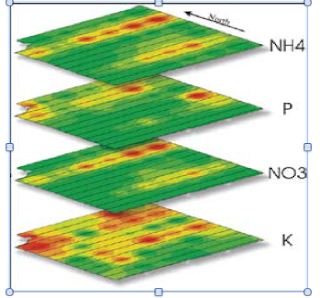This past Friday, I had a phone conference with Chip Petrea.
Mr. Petrea is a principal research specialist on Ag safety and health at the
University of Illinois. He is highly involved in the Illinois AgrAbility
Project, as well as the Ag Safety and Health Network. Mr. Petrea’s passion
stems from his first hand experience of injury on the farm. In a
previous blog post, I mentioned the article on Mr. Petrea in “Beyond the Bean”, which explains Mr.
Petrea’s main focus- educating other farmers on farm safety in a unique way.
Here is a summary of my conference with Mr. Petrea:
1. I asked him about the points he covers in his
presentations on farm safety.
His response was that he tries not to focus on the “do’s and
don’ts”, but he will give basic advice. For an example, he usually recommends
farmers to purchase ROPS, which is a structure that is similar to a car roof,
but on a tractor. He also recommends that all farmers wear seatbelts in the
tractor if the tractor provides it. He told me that he focuses on behavior, and
how that might affect farm safety. For an example, many farmers allow their
children to drive the combine down the road, but is that safe? In small farming
communities, many people give their children a little more freedom- it is a
different culture. Mr. Petrea said that he studies these types of behaviors and
identifies the specific behaviors that are largely contributing to farm-
related accidents.
2. I inquired about how stress of a farmer differs from the
stress of a regular civilian, and how that stress might distort behaviors in a
farming community.
Mr. Petrea explained that much of farmers’ stress comes with
meeting demands. When it comes to farming as a profession, there are not many
ways to be flexible in meeting their demands, which largely differs from the
more freely given flexibility in normal civilian life. Additionally, he
explained that farming communities are very different in general because it is
a much tighter community. This means that an individual in a rural community is
unlikely to be accepted as a member of society if he or she does not agree with
the common views on religion, politics, parenthood, etc. These pressures
greatly impact the way of life in a farming community. As a result, similar
behaviors seem more common and stress seems to be augmented in a farming
community.
3. Lastly, I asked what happens to farmers that get injured
on the farm, and if there are any programs currently in place to cater
specifically to farmers upon injury.
Mr. Petrea says that there are 24 registered states for the
Disabled Farmers Program. He says that many farmers who get injured, however,
do not reach out to this program either because it requires too much paperwork
for the result, because the farm agents are unaware and uninformed, or because
of some other reason. He explained that this is not the fault of the program
itself- it is very hard to reach out to farmers in need. Although many farmers
check their emails to receive notifications about programs, many still remain
disconnected- maybe because they ignore it or aren’t interested at the time.
Mr. Petrea is confident that many farmers need convincing to get aid. Many are
too afraid to reach out for help on their own, because they know that it might
mean rehabilitation and time away from the farm. In terms of on- site
assistance upon occurrence of a farm accident, Mr. Petrea told me that there is
no direct training that the government provides in case of farm accidents
specifically. Therefore, rescue teams must apply what they do in case of a car
accident to farm accidents. Once the injured farmer is transferred to the
hospital, he or she is provided the same treatment as those that suffer from
automobile injuries. Mr. Petrea highlighted the point that in case of farm
accident, there is no help specifically for farmers either on the sight of the
accident, or for farmers’ medical treatment following the accident. Many
farmers are provided with prosthetic designs that work efficiently in normal civilian’s
life, but are not designed for the tasks involved in a farmer’s life.
I have synthesized from this interview and from other
resources I have been studying this month that there needs to be aid given to
farmers that is modeled to help them specifically. One of the main resources I
investigated was Obama care, and how it will affect farmers specifically as a
group. The answer is that farmers will be affected the same as every other
citizen- there is no provision in Obama care that caters specifically to
farmers. In other words, “one shoe fits all” through Obama care. Through my
research, I have approached a conclusion. Farmers have a very unique way of
life, and their needs should be catered to specifically through both economic
and medical aid. I believe that the enhancement of these specific programs
would be a great investment in America’s time and money. After all, farmers are
the future… especially with the rapid increase in global population and world
hunger.




